Nissan e-POWER First Impressions Review | Philkotse Philippines
Updated Jun 03, 2022
Nissan wants Filipinos to experience the real bridge to EV ownership, and kick ass while doing so.

In this review…
- Introduction
- What is Nissan e-POWER?
- EV-like driving experience
- Nissan e-POWER vs EVs
- Questions waiting for answers
Nissan e-POWER First Impressions Review: Introduction
I remember not too long ago when I was a teenager, a liter of 91 octane gasoline was as cheap as a 500ml bottle of Coca-Cola. Now, you need to give up a 1.5L bottle of Coke to get the same amount of the same fuel. Worse, even diesel fuel’s not as cheap anymore, which makes these days not so great if you’re driving any fossil fuel-drinking vehicle.
So, what’s the solution? Electric vehicles, but since the Philippines is still lagging behind in adapting to EVs (at least there’s an EV bill now but that’s for another story), hybrids are becoming an excellent option for Filipino car buyers.
Most of these hybrids, however, are expensive and out of the masses’ reach.
Nissan Philippines has other plans. In a recent pocket ride and drive event, the Japanese marque introduces the e-POWER technology. The vehicle remains a mystery (for now) but the technology it carries is the highlight of the event.
After a quick classroom session and an experiential drive with the e-POWER prototype, here’s what you can expect from this new technology that made its ASEAN debut in 2020.
What is Nissan e-POWER?
To understand what Nissan e-POWER is, we need to understand the types of hybrid vehicles.
In a nutshell, a Series hybrid system prioritizes the use of electric motors, with the internal combustion engine (ICE) on standby when there’s a need for more power.
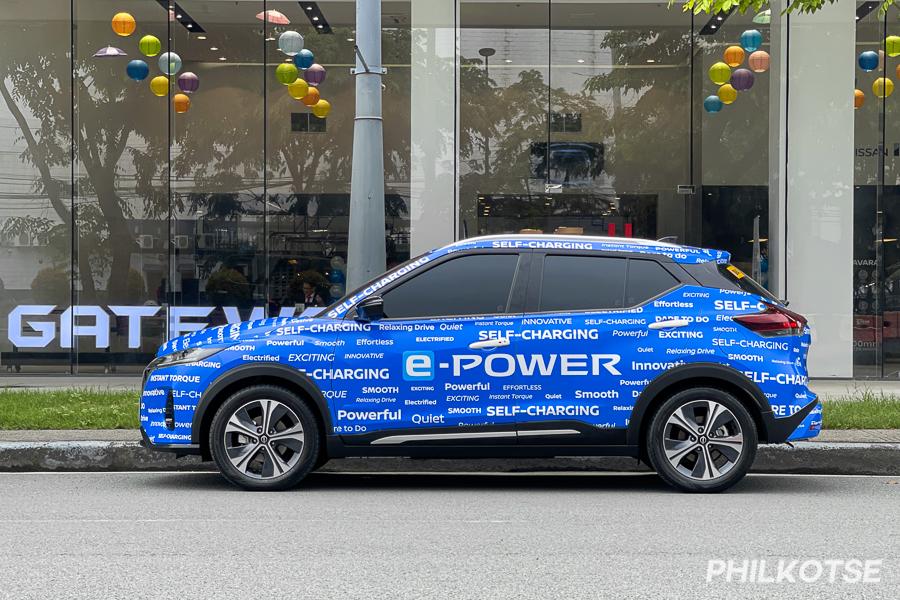
The e-POWER Prototype looks like a regular crossover
Meanwhile, a Parallel hybrid system involves both the ICE and the electric motor/s working in tandem, which puts them parallel to each other. Most non-plug-in hybrid vehicles employ a parallel system, while plug-in hybrid EVs employ both (hence a pure EV mode in these cars).
On both Series and Parallel systems, the engine has a direct mechanical interaction with the wheels.
Unlike the usual hybrids though, the HR engine (a family to the Almera’s 1.0-liter mill) in Nissan e-POWER’s prototype doesn’t have any mechanical interaction with the wheels. This means the front wheels are only run by electric motors, while the engine exclusively serves as a generator to charge the battery that provides the juice for the electric motor. Without bearing the penance of running the wheels and dealing with traction, this means the ICE is running on optimal levels, hence maximizing fuel efficiency.
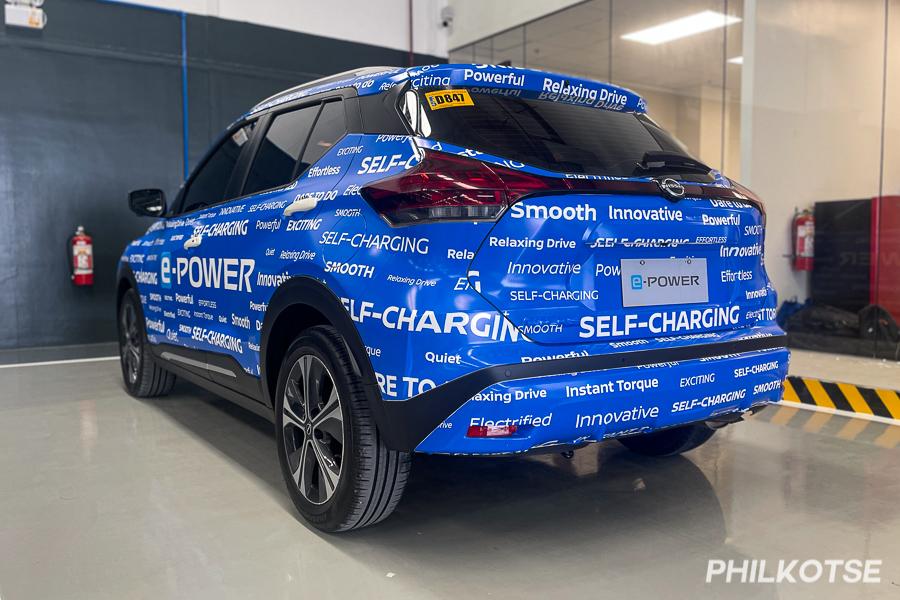
Will the upcoming model that uses the e-POWER system look like this? We’ll wait and see
Of note, Nissan disclosed that the upcoming vehicle equipped with e-POWER will have a fuel consumption of 23.8 km/L.
Regenerative braking also plays a huge role in charging the Nissan e-POWER’s battery. Simply put, the system takes the excess kinetic energy from the wheels and converts them into potential energy stored on the battery.
YOU MAY WANT TO READ
Ford Expedition
Model Price Philippines
₱ 4,479,000 – ₱ 4,612,000
Audi Q8
Model Price Philippines
Price available upon request
SsangYong Tivoli
Model Price Philippines
₱ 1,130,000 – ₱ 1,290,000
EV-like driving experience
With only the electric motors motivating the wheels, you might expect the Nissan vehicle with e-POWER to drive like an EV – and it does. After a quick drive with the test vehicle, I can say that the experience was like driving a pure EV. Benefits include a pretty quiet drive (especially in EV mode) and a low center of gravity with the battery positioned low in the body.
In fact, even when the engine came to life to charge the batteries, the ICE worked quite silently in the background, easily drowned by music and in our case, a healthy conversation about ghosting.
Another benefit of the EV-like drive was the instantaneous torque from the motors. As the motors were connected directly to the drive shaft, there wasn’t a need for a transmission, ergo, eliminating power loss.
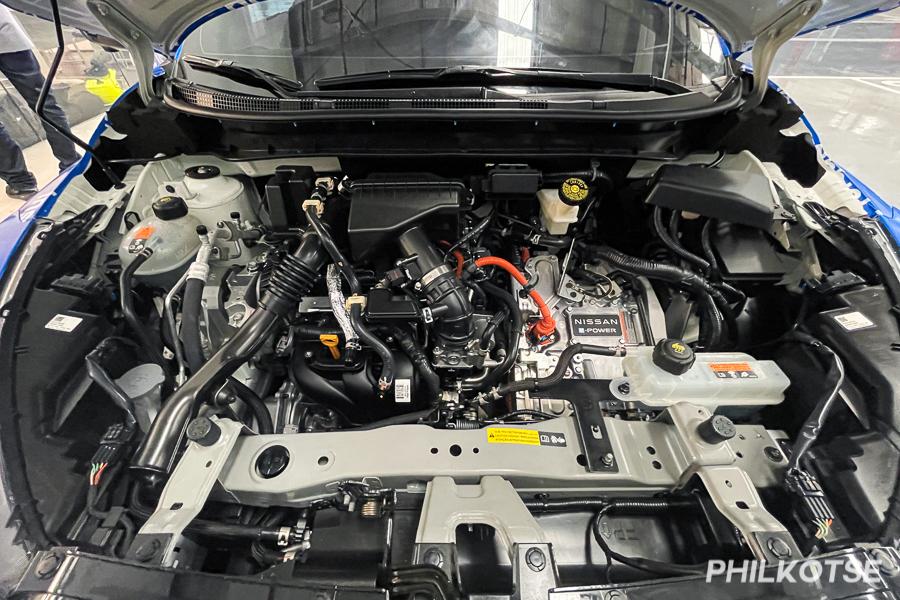
A peek under the hood of the e-POWER
This was demonstrated by letting us floor the accelerator while in Sport mode on a straight road. I felt an immediate surge of pull, which meant that I had to get comfy with the headrest. The engine also revved in proportion to the accelerator input, not only to keep the battery charged up but also to add an exciting, sporty feeling for the driver.
In another test, we tackled the dreadful car park of SM Mall of Asia, with the prototype able to effortlessly climb despite the car having four people aboard. The regenerative braking from the e-pedal was greatly felt when we were going down, allowing the battery to collect more power from the wheels.
Nissan e-POWER vs EVs
Despite driving like an EV, the Nissan e-POWER prototype removes the most important factor of EV ownership – range anxiety. That’s because Nissan e-POWER-equipped vehicles don’t need charging, which means you don’t need to panic if your battery’s drying out; the system charges itself and won’t let you run it out during EV mode. You don’t need to find a charging station, which, in our case in the Philippines, is still relatively non-existent (with only a few far in between).
Driving the Nissan e-POWER is just like owning a conventional ICE-powered vehicle; only more efficient, ergo, fewer trips to fuel stations.
Questions waiting for answers
Most of our questions were answered during the classroom session and during the drive, though there were still some that needed answers simply because they were specific to the e-POWER-equipped vehicle that Nissan’s bringing in.
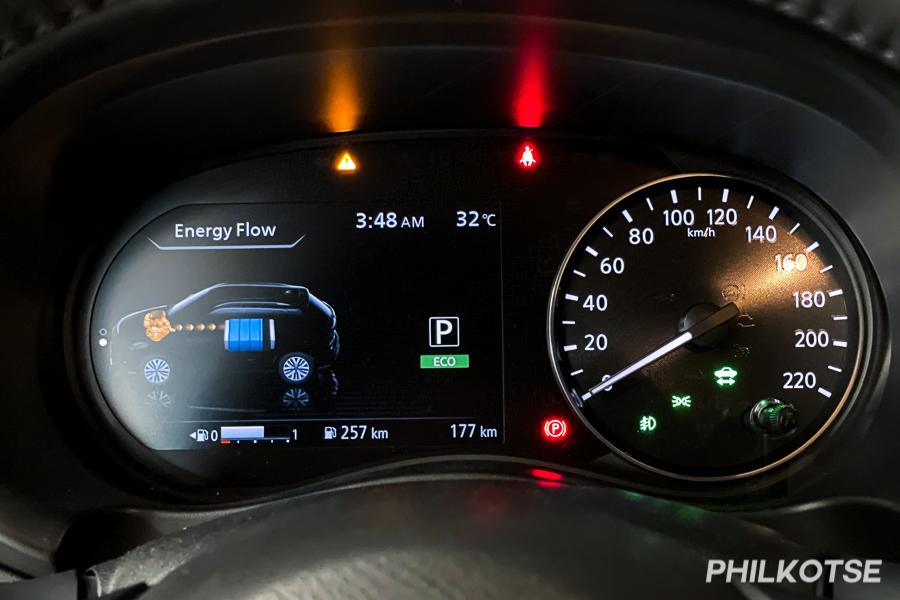
The e-POWER’s fully digital instrument cluster
One of them is real-world fuel efficiency. As mentioned, Nissan touts a fuel consumption of 23.8 km/L but nothing beats actual tests done on the actual car. But given how efficient the Almera’s HR engine was when I tested it (and how close the claimed figures were with my actual tests), I am confident that Nissan isn’t far off with its estimate.
The next question would be maintenance costs. Nissan explained that the maintenance costs for Nissan e-POWER aren’t any different from its ICE counterparts, though we can deduce that it might even be less costly given that transmission fluid is out of the picture.
As for the battery and electric motors, they are in a closed system so diagnostics are only done through a computer to check the battery’s health. In any case, the batteries are covered by a separate warranty; Nissan has yet to disclose specifics given that the vehicle hasn’t been revealed at this point. With the LEAF as a reference, the batteries are expected to have around 90 percent efficiency even when the vehicle is 10 years old.
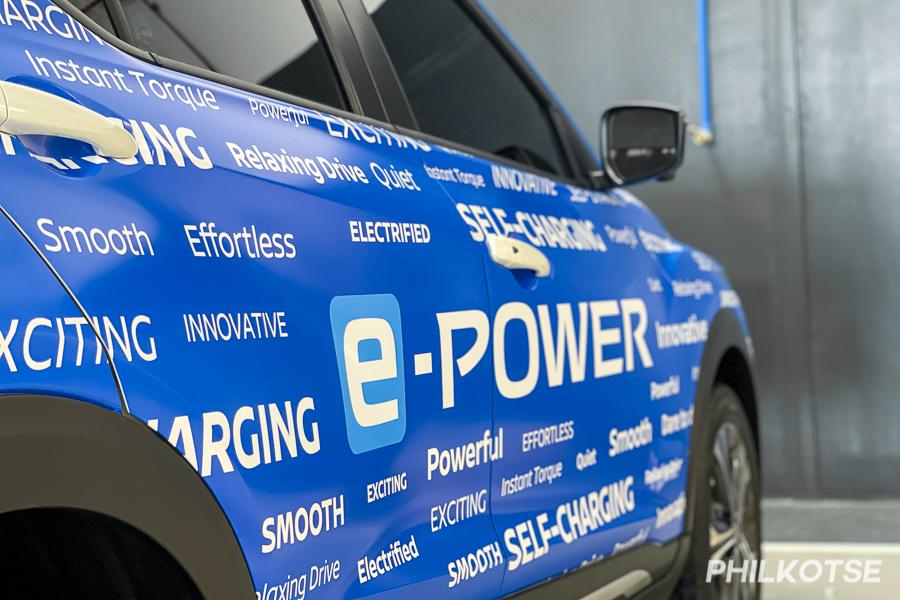
Will more Nissan models use the e-POWER system?
Lastly and I think personally the most important – pricing. As I mentioned during the briefing, I hope Nissan prices this upcoming vehicle handsomely to attract more buyers. As we all know, price is king to Filipinos despite the cost-efficient benefits I discussed here.
With the aim to bridge electric mobility to more buyers, Nissan PH should keep the pricing at a relative reach so it can kick the pricey bottoms of its rivals.
I guess the other most important question from myself and those who are interested is… when?



